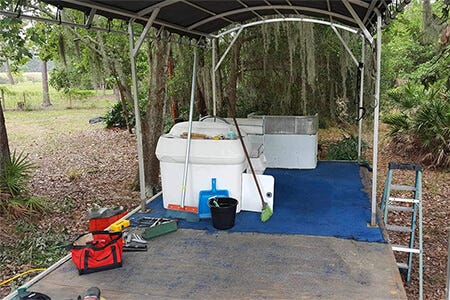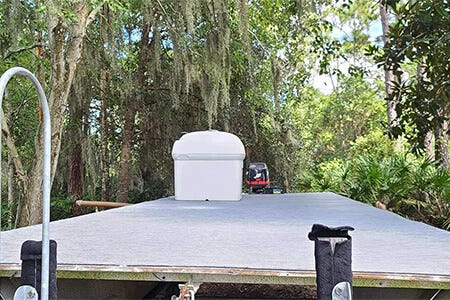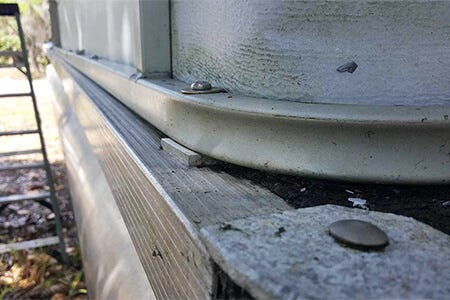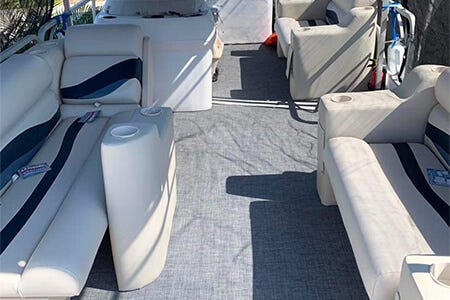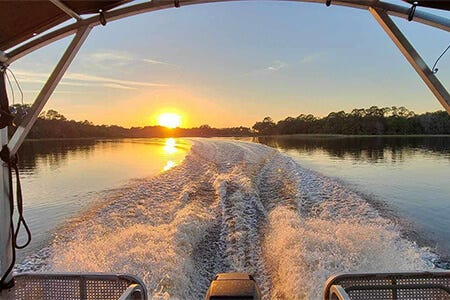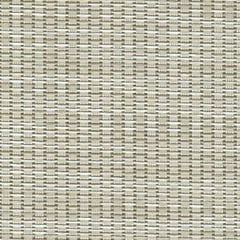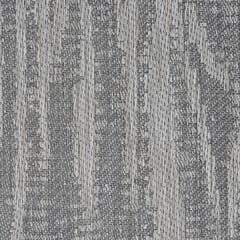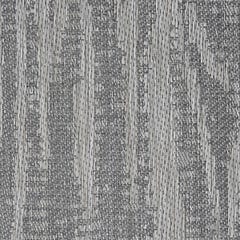Replacing Pontoon Flooring and Seats
October 12, 2023 7 min read


It’s a common perception that pontoon boats tend to deteriorate more quickly from weather and use than conventional fiberglass and aluminum boats. That’s mostly accurate, all else being equal. From the deck up, after all, a typical pontoon is composed mostly of molded plastic, upholstered foam, carpet or vinyl flooring, and canvas — all of which are more susceptible to wear, tear and weathering than fiberglass or aluminum.
Contents
Silver Lining
But there’s a silver lining. When the time comes for an overhaul, that weathered old pontoon can be restored to like-new with a lot less difficulty and expense than most other boats. In fact, in most cases, replacing pontoon furniture and flooring can be a DIY job. Compare that to a major restoration of a typical fiberglass boat, which involves lots of fiberglass patching, sanding and polishing, new nonskid and new cushions (which likely have to be custom made at considerable expense).
That’s exactly why Boat Outfitters E-commerce Product Manager Ashley Burnette and her family decided to purchase a dilapidated 1990 Sylvan 24’ pontoon boat back in 2020. “It was a pandemic purchase,” she says. “There was no furniture. It had the fencing, the console and an old Key West flip-flop seat. The carpet was pretty bad. They just used old plastic patio chairs to sit on.” But the pontoons and the engine were good, and Burnette knew she could fix the rest up easily enough with help from friends and family.
Selecting Replacement Pontoon Flooring
The first step in redoing the old pontoon boat was stripping the deck down to bare wood.
Burnette removed the aftermarket hard top added by the previous owner, removed the weathered fencing to be painted, removed the old carpet, and scraped and sanded the plywood deck to remove old adhesive and carpet fibers. She loosened the console from the deck and lifted it up enough to remove the carpet from underneath but left the steering and engine controls connected.
Woven-Vinyl Material
For replacement flooring, Burnette chose woven vinyl with a lightly cushioned backing. Cushioned vinyl pontoon flooring offers the softness underfoot and slip-resistance of carpet but is UV-stable, resists mold and mildew, doesn’t absorb water and can be cleaned easily with a pressure washer. Contemporary colors and patterns can make for upgraded aesthetics too.
Specifically, Burnette went with SupremeVinyl in the Tatami pattern, which comes on an 8’6” wide roll, allowing her to cover the whole deck with a single 25’ piece.
Installing the New Vinyl Flooring
Installing the flooring, Burnette says, was relatively simple. Using a utility knife, she marked and cut an opening for the steering cable and other console rigging to pass through, then made a single, straight cut from the opening to the starboard side of the flooring.
This meant she could install the carpet without disconnecting the controls. And with the location of the console near the starboard fence, the seam would be almost completely hidden and would never be walked on.
Laying the New Floor
With the new flooring now laid on the deck, Burnette carefully trimmed the edges with the utility knife for an exact fit. A fresh, sharp blade, she says, makes the job much easier.
For the final installation, she rolled the flooring back from the bow section to expose the forward half of the deck. Then she and her helpers used long-handled 1/16” x 1/16” square-notch trowels to spread marine-grade carpet adhesive onto the deck before rolling the forward half of the vinyl flooring back down over the adhesive.
Using a heavy floor roller like those used by household flooring installers, they then rolled the flooring to ensure good adhesion and force out air bubbles trapped between the flooring and the deck. They then repeated the process to glue down the back half of the flooring.
Reinstalling the Fence
With the flooring installed, it was time to reinstall the newly painted fence. First, though, Burnette installed new fence risers to raise the bottom rail of the fence slightly off the deck.
This allows water to freely flow off the deck and improves airflow as well — both important for pontoons that live outside in rainy climates.
Choosing New Pontoon Furniture
Next up was replacement pontoon furniture. By and large, aftermarket pontoon boat seats are modular as opposed to custom, making them much more affordable than the made-to-fit upholstery found on many conventional fiberglass and aluminum boats.
Manufacturers offer couches in a variety of lengths, corner pieces, arm rests, lounge backs and helm and fishing seats which can be combined in a variety of ways to create custom-looking arrangements. Wise, the manufacturer of the seats sold by Boat Outfitters, even offers an interactive drag-and-drop design tool for DIYer
Types of Seating
Burnette’s 1990 pontoon had the open bow commonly found on older models, as opposed to the “fenced” bow with a gate that has since become more popular. The open bow was a plus for her and her family’s use.
At 24’, the boat had plenty of space for seating, even with the bow left open, and the unobstructed bow area was great for fishing and sunbathing. That meant no L-shaped or U-shaped seating — just straight couches along the sides. (For pontoons used in rougher water, fencing across the bow can help keep water out of the boat, but Burnette’s pontoon was intended solely for use on smaller lakes and canals in Central Florida.)
The Perfect Fit
Burnette used the online design tool to determine that she had room along the starboard fence forward of the console for a 50” couch with a lounge back on the aft end and an armrest on the forward end.
On the port side, there was room forward of the entry gate room for one 36” couch with two armrests. Aft of the gate there was room for another. A new Wise flip-flop cooler seat fit nicely in place of the old helm seat and provided convenient cold storage.
Wise Seating
Wise makes two series of pontoon furniture — Deluxe and Premier.
Premier Series uses higher-grade vinyl and foam.
Premier is the higher end of the two, in terms of both quality and aesthetics. The Deluxe Series, like everything Wise builds, is high-quality and long-lasting, but the Premier Series uses higher-grade vinyl and foam and features more contemporary color combinations and patterns, more sculpted bases, plusher cushions and higher backs. (Note that both come with the same 5-year frame/3-year upholstery warranty.) Burnette chose Premier seating, primarily for aesthetic reasons.
Installing the Replacement Seats
Assembly and installation were surprisingly easy, says Burnette, who did the job with her sister. “I wouldn’t describe myself as very handy,” she says. “I couldn’t build a birdhouse if you gave me instructions and had it halfway done. And my sister’s even less handy.”
Arranging the Couches
First, they assembled the couches, which come as three separate parts — base, seat and back. Then they carefully measured the location of the couches and through-bolted them to the deck with stainless bolts, nuts and washers. Stainless steel screws are fine too, but through-bolting is stronger, and Burnette had easy access to the underside of the deck with the boat sitting on a trailer.
Either way, use a washer between the screw head and the bottom of the seat base to spread the load across a larger area of the plastic base
Now, the Armrests
The armrests were slightly more challenging, since access is tight. On the couches, there’s wide-open access to drill through the bottom of the base and the deck, but with armrests, there’s only a small opening to reach through with a drill or driver. The armrests and lounge back mount directly to the deck, not to the couches they adjoin.
Furniture is typically not attached to the fencing either, but it’s important that couches fit tightly against the fence for additional support.
Feels Like New
The additional storage provided by the seats on the newly restored boat, says Burnette, is almost as big a deal as the seating itself. “All that storage keeps the deck clutter-free and clean,” she says, “so you can walk around with kicking stuff.” Plus, with the new flooring, plush seats and repainted fencing, the old pontoon feels almost new again.


